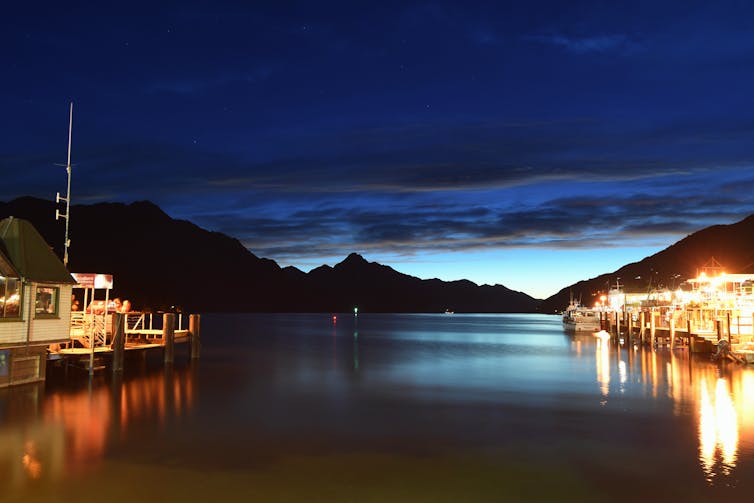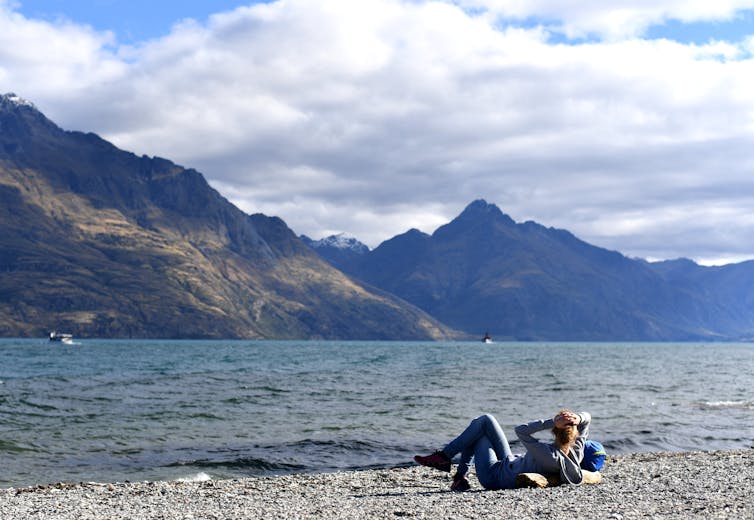Why a trans-Tasman travel bubble makes a lot of sense for Australia and New Zealand
- Written by Freya Higgins-Desbiolles, Senior Lecturer in Tourism Management, University of South Australia
We are hearing increasing talk about a trans-Tasman “travel bubble”, which could see Australia and New Zealand open their borders to each other.
New Zealand Prime Minister Jacinda Ardern was a special guest at Australia’s national cabinet meeting on Tuesday, which discussed the possibility of setting up a travel safe zone.
Both Ardern and Australia’s Prime Minister Scott Morrison have cautioned a travel bubble will not happen immediately. After the meeting, Morrison said a safe zone is “still some time away”. But he also stressed, “it is important to flag it, because it is part of the road back”.
Read more: Reclaiming the streets? We all can have a say in the 'new normal' after coronavirus
What would a travel bubble mean in practice for Australia and New Zealand?
As tourism researchers in both countries, we see a travel bubble as a great opportunity to kick-start the post-COVID economic recovery, while also focusing on more sustainable tourism.
Why the trans-Tasman bubble makes sense
A travel bubble would see quarantine-free travel allowed between Australia and New Zealand.
The two neighbours have a unique opportunity to do this. Not only are they geographically isolated, both have so far had success containing - perhaps even eliminating - COVID-19 cases within their borders.
It is not yet known when international flows of tourists will be possible again. But it is understood that global tourism as we once knew it will not be possible until a COVID-19 vaccine is widely available.
Historically, limited travel circuits have been associated with former and current Communist states. Nevertheless, for Australia and New Zealand in 2020, the idea of a travel safe zone makes a lot of sense.
In 2018, New Zealand was Australia’s second largest inbound market for visitor arrivals and fourth largest market for visitor nights and total visitor spend. Australia is New Zealand’s largest visitor market, generating 1.5 million visitors a year as of 2017.
 Australians make up more than half of international arrivals to New Zealand each year.
Lukas Coch/AAP
Australians make up more than half of international arrivals to New Zealand each year.
Lukas Coch/AAP
The beauty of our shared travel markets is our visitors are generally repeat visitors who head to diverse regions. Because more than 70% of Australians book self-drive holidays, for example, their spending spreads more widely than some other visitors.
Australians seek skiing and adventure in Queenstown, wine in the Martinborough or Waiheke Island regions. They also support Australian sports teams competing in Auckland, Wellington and Dunedin. In reverse, lots of Kiwis head to the Gold Coast but also visit the Hunter Valley for wine or Melbourne, Sydney or Brisbane for sports events.
Starting to rebuild these markets while the rest of the world remains in lockdown would represent a huge boost to both economies.
What is needed to make a bubble work?
After the national cabinet meeting, Ardern stressed “there is still a lot of work to be done” before the travel safe zone idea can progress.
The key to a successful trans-Tasman travel arrangement will be sound planning and implementation.
Rigorous public health measures to facilitate safe travel will be essential, including being prepared for all travel to be halted again if the situation changes.
Read more: New roadmap gives Australia two paths out of COVID-19 lockdown: elimination or adaptation
Broad stakeholder involvement and coordination will be necessary, including between tourism commissions, airlines and airports, industry associations and a range of government agencies, to ensure any reopening is managed well.
Local councils and businesses must also be involved to ensure that the tourism restart is planned, coordinated and controlled.
A chance for greener travel
A trans-Tasman travel bubble could also lead to a change in both countries’ tourism strategies.
Like other countries, Australia and New Zealand have historically prioritised international tourists, particularly “high value travellers”, who spend more and stay longer.
A COVID-era focus on domestic and trans-Tasman travel will likely result in lower yield but could also lead to a more sustainable tourism future. Trans-Tasman travel is the least carbon emitting of our international markets, because it does not rely on long-haul flights.
 A focus on domestic and trans-Tasman travel also provides a chance to create a greener tourism industry.
Lukas Coch/ AAP
A focus on domestic and trans-Tasman travel also provides a chance to create a greener tourism industry.
Lukas Coch/ AAP
Trans-Tasman visitors also tend to have a lower carbon footprint at their destinations. In 2018, more than half of all Australian visitors to New Zealand (57%) were repeat visitors. Repeat visitors tend to spend more of their time at regional destinations, and less time incurring the carbon costs of transporting themselves around the country.
New Zealand has already begun to rethink its tourism economy to establish greater sustainability. A trans-Tasman bubble presents an opportunity to foster tourism with a lighter footprint.
Could the bubble be expanded?
There is a call for an extension of this travel bubble to the Pacific neighbourhood, where there are also low infection numbers.
Such a move would not only provide economic support to the Pacific community, it would also represent another step in the long process of restoring normality in different regions of the world.
Read more: The coronavirus survival challenge for NZ tourism: affordability and sustainability
Ardern has kept the door open on this aspect, but noted “at the moment, we are focused on Australia”. She has also cautioned about not introducing COVID-19 to parts of the Pacific untouched by coronavirus.
Even if it remains just Australia and New Zealand, any travel bubble will obviously elevate the risk of COVID-19 reinfection. So, public health priorities must trump the desire to kick-start economies, to make sure we don’t squander our success against coronavirus so far.
But if the governments and tourism industries can find the right balance between public health and economic needs, then Australia and New Zealand stand to benefit from a head start on the long road to economic recovery.
Authors: Freya Higgins-Desbiolles, Senior Lecturer in Tourism Management, University of South Australia





